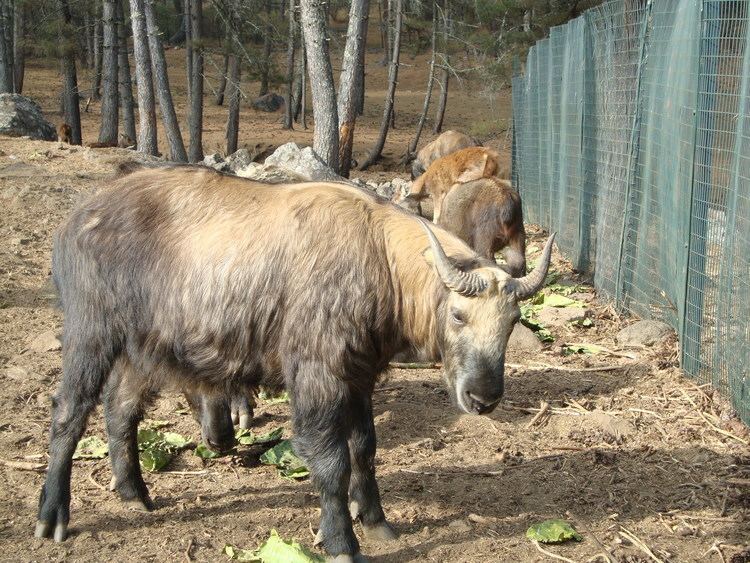Scientific name Budorcas taxicolor whitei Order Even-toed ungulate | Genus Budorcas Phylum Chordata Rank Subspecies | |
 | ||
Similar Takin, Sichuan takin, Golden takin, Mishmi takin, Mammal | ||
Bhutan takin budorcas taxicolor whitei national animal of bhutan
The Bhutan takin (Budorcas taxicolor whitei) is a vulnerable subspecies of Takin native to Bhutan, North Eastern India, Western part of China, and Tibet. The main threats to the Bhutan Takin are hunting and habitat loss.
Contents
- Bhutan takin budorcas taxicolor whitei national animal of bhutan
- Range behavior and habitat
- References
Range, behavior, and habitat
In Bhutan, Takin are found in bamboo forests at altitudes of 1,000 to 4,500 metres (3,300 to 15,000 ft), where they eat grass, buds and leaves. Takin are diurnal, active in the day, resting in the heat on particularly sunny days. Takin gather in small herds in winter and herds of up to a hundred individuals in the summer; in winter, they move to lower elevations and split into smaller herds of 10-50 individuals, mostly in the Gasa District. As is often seen in bison, old males are often solitary.
A study of the Bhutan Takin's seasonal movement and habitat use has been conducted by Jigme Dorji National Park staff which is thought to be the stronghold of the species in Bhutan. An earlier study of its diet on its summer range showed that the takin is a generalist browser foraging on numerous shrubs and forbs.
In China, the species is known to inhabit from south of the Yarlung Tsangpo River on the southern-facing side of the eastern Himalayas, to the westerly bend of the river. In India it occurs in Arunachal Pradesh and Sikkim.
